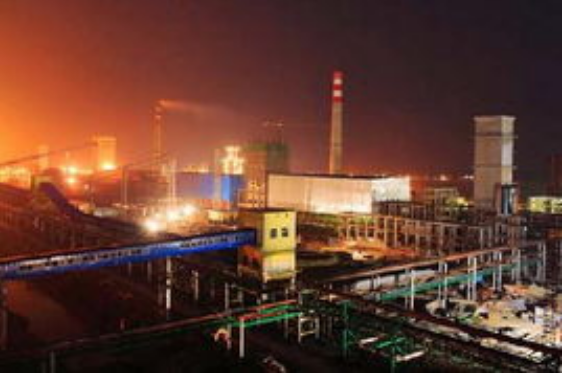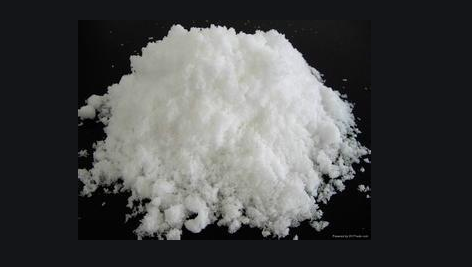Color changes will occur due to various reasons in the production of ammonium sulfate. To solve the problem of ammonium sulfate discoloration requires multi-faceted analysis and effective measures.
Generally, the coking plant adopts the process of producing ammonium sulfate with a spray saturator. Ammonium sulfate has appeared in different colors such as black and gray, and produced products of substandard quality. In the process of solving problems when problems arise, some experience is summed up.
Under normal circumstances, pure ammonium sulfate is a colorless rhombohedral crystal with a density of 1766kg/m³. The molecular weight is 132.15, and the high-quality ammonium sulfate contains more than 21% nitrogen. Due to the influence of impurities, it often has different colors such as gray or dark black. Most of the crystals are in the shape of needles, flakes or powders, and the formed particles are very small, and the nitrogen content decreases. There are many factors affecting the quality of ammonium sulfate, such as: sulfuric acid concentration, mother liquor temperature, saturator resistance and so on.

1. The color of ammonium sulfate is black or gray
The reasons for the blackening of ammonium sulfate mainly include the following aspects: the electric tar catcher fails, and the tar removal effect is not good; the raw ammonia water contains a large amount of tar, which causes the tar to enter the ammonium sulfate system along with the ammonia gas during the ammonia distillation process; The quality of sulfuric acid is not good; the mother liquor storage tank is evacuated, and the acid tar floating above is pumped into the saturator.
(1) Problems found
(1) Generally, it is due to the failure of the electric tar catcher in the drum cooling section, and the tar content in the electric tar catcher exceeds the standard. At this point the ammonium sulfate particles will be observed as a significant impurity. Due to the excessive tar content, a large amount of tar enters the ammonium sulfate mother liquor and reacts with the acid in the mother liquor to form a large amount of acid tar. Under the circulation of the large mother liquor pump, a large amount of acid tar is mixed with the ammonium sulfate mother liquor to make the ammonium sulfate mother liquor color It also turns black, and the blackening of ammonium sulfate mother liquor is generally affected by tar. Measures taken: resume the normal operation of the electric trap as soon as possible, appropriately increase the voltage of the electric trap, and strengthen the frequency of flushing the electric trap from once a month to once every half a month; increase the frequency of acid tar fishing in the full flow tank from once an hour to once 1 time for half an hour.
(2) There is a lot of tar in the remaining ammonia water tank, and the tar enters the ammonia distillation tower with the ammonia water, and the ammonia gas entering the saturator entrains impurities and increases water vapor, which combines with the crystal ratio, making the color of ammonium sulfate gray and black.
(2) Measures taken
(1) Clean the water seal of the ammonia pipeline from the ammonia distillation tower to the saturator to reduce the condensate (tar and other impurities) in the ammonia gas from entering the saturator; Condensate the impurities entrained in the ammonia gas to reduce the impurities in the ammonia gas; control the oil content in the residual ammonia water from ammonia distillation, strengthen the work of putting tar in the remaining ammonia water tank, and put it every 2 hours to minimize the tar content in the remaining ammonia water.
(2) The main impurities in the mother liquor in the saturator are iron salt, aluminum salt, thiocyanate, various arsenic compounds and various organic compounds, such as: phenol, pyridine, naphthalene and various components of tar. These impurities in the mother liquor are generally harmful to the growth of the crystal. The ions of the impurity salts are adsorbed on the crystal surface, covering the active area of the crystal surface, and slowing down the growth rate of the crystal. Sometimes, due to the selective adsorption of impurities on a certain crystal surface, the crystal growth is limited, and the crystal particles and color are affected. This is also one of the reasons why the discoloration ammonium sulfate particles are smaller. In order to ensure the purity of ammonium sulfate, when using sulfuric acid, manufacturers with high cost performance and long-term cooperation customers are preferred in terms of incoming raw materials; unloading is strictly prohibited if the incoming sulfuric acid test fails.
(3) Carry out acid washing once every three months (control the acidity at 15%, and then wash with water to ensure that the saturator is fully washed) to ensure the smooth flow of equipment.
(4) Shorten the cleaning period of the mother liquor tank from once a year to once every six months to reduce the crystal ratio deposited at the bottom of the mother liquor tank.
Color changes are common in the production of ammonium sulfate. In order to prevent the production of unqualified color ammonium sulfate products, it is necessary to observe and adjust from time to time during production, and choose different measures to solve different color changes for different problems.

2. Redness of ammonium sulfate
There are two possibilities for this phenomenon:
The first type: mixed with iron ions
The second type: phenol is brought in from the ammonia distillation section
for the first case
Performance: The ammonium sulfate product is red when it is produced.
Reason: Generally, the content of iron in sulfuric acid is high, or corrosion of pipelines and equipment occurs, and iron ions are mixed.
for the second case
Appearance: The product is white or light yellow when it comes out, and turns red after a period of time.
reason:
The oil removal effect of the remaining ammonia water before entering the ammonia distillation tower is not good, and the oil content is high;
Insufficient reflux at the top of the ammonia distillation tower, and too high temperature of the ammonia vapor coming out of the tower;
The pressure at the top of the ammonia distillation tower is too high, and the ammonia vapor carries liquid.
The reason for the analysis from these aspects is mainly because the main factor that causes ammonium sulfate to turn red in the later stage is phenolic substances. The remaining ammonia water contains certain phenolic substances, among which the ones at ≤230°C are monohydric phenols (also known as volatile phenols), and the components include phenol, cresol, and xylenol. This part of the substance will evaporate together with the ammonia gas and enter the ammonium sulfate system during the distillation process, especially when the oil removal effect is not good and the operating temperature of the ammonia distillation tower is high.